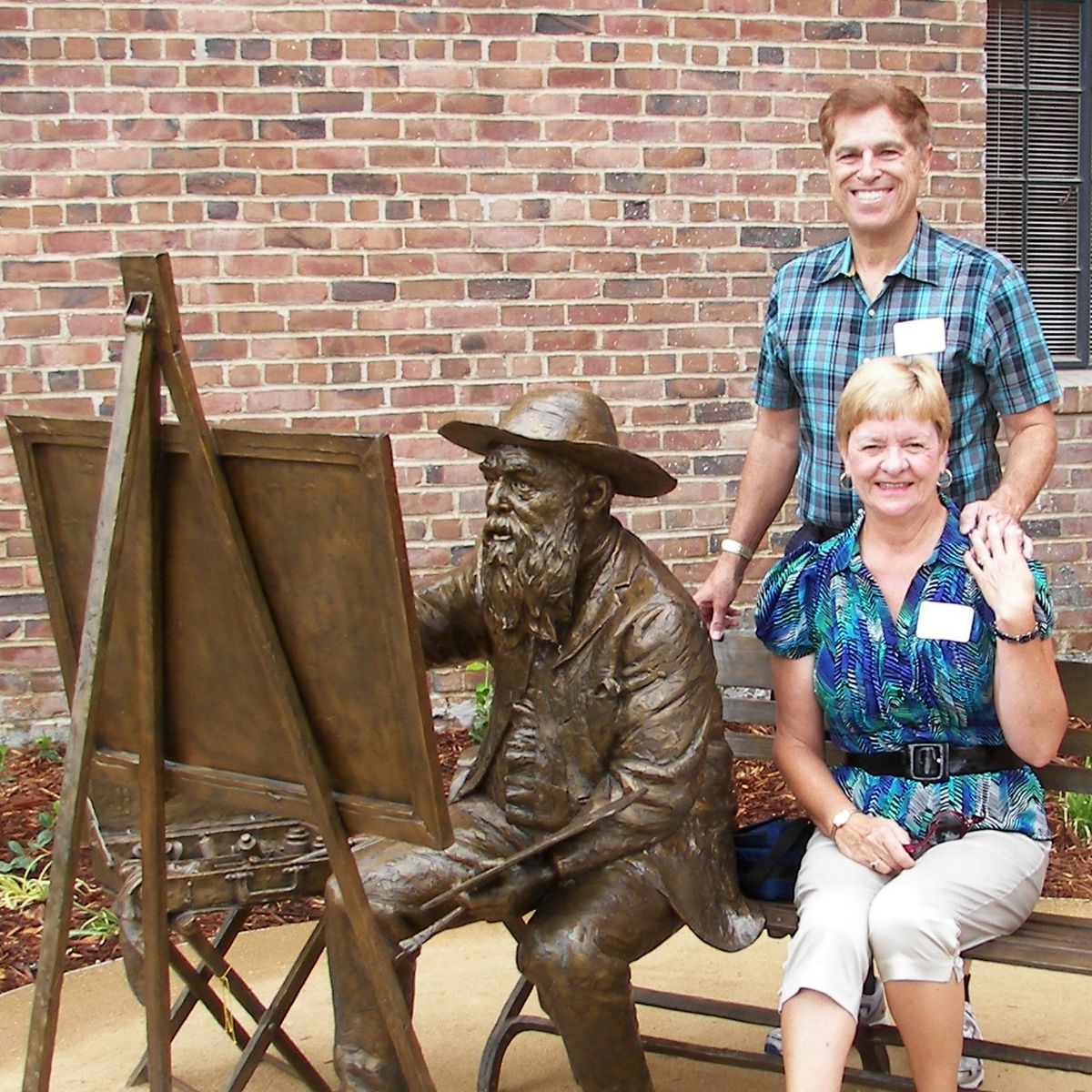Harringtons Continue to Shape Pleasanton Public Art
Harringtons Continue to Shape Pleasanton Public Art

Virtually everyone who lives in Pleasanton has benefitted from the dedication of retired educators Gary and Nancy Harrington to public service. The couple moved to Pleasanton in 1972 and, after retirement, became active philanthropists and passionate advocates for the value of public art. The Harringtons may be best known locally for creating the Harrington Art Partnership Piece for You (H.A.P.P.Y.) funding initiative in 2011. A formal process for acquiring public art for Pleasanton was developed at the urging of the couple; in turn the Harringtons donated regularly to H.A.P.P.Y. for purchases of art to grace the city.
The couple's first public art donation to the City of Pleasanton was artist Stanley Proctor’s "Poppies" sculpture, which sits in front of the Veterans Memorial Building. "Poppies" is a life-size bronze sculpture portraying a World War I veteran. Many other donations have followed, including a pair of glass marquees by world-renowned architectural glass artist Martin Donlin on the exterior of the Firehouse Arts Center and "Monet's Bench," a sculpture by Gary Price, in the outdoor plaza.
In August, Gary and Nancy Harrington moved from Pleasanton. While no longer residents, they will continue to have a major impact on the city’s public art. Before the move, the couple completed an agreement with the nonprofit Pleasanton Cultural Arts Council (PCAC) to act as their agent in matters of public art.
“PCAC is solely responsible for recommending artworks for purchase and guiding each proposal through the entire approval process–from Civic Arts Commission to Public Art Selection Subcommittee and ultimately to the City Council for final approval,” explains Jan Coleman-Knight, PCAC Board Member and Vice-Chair of the Pleasanton Civic Arts Commission.
“Importantly, PCAC carries full responsibility for recommending how the Harrington Art Partnership Piece for You funds are spent. The H.A.P.P.Y. fund is a dedicated donation account, used exclusively for the purchase of public art. While community members may contribute, the Harringtons themselves consistently make major annual donations of $20,000 or more. These funds are held in a separate account by the City of Pleasanton and are not part of the City’s General Fund. There is also a safeguard: if the account grows to five times the annual allotment because the City fails to spend the funds in a timely manner on public art, the Harringtons will permanently stop donating. Finally, this is not a short-term arrangement. The MOU between the Harringtons and PCAC is binding in perpetuity–beyond the Harringtons’ lifetimes. It is a true legacy agreement.”
The latest example is the “Don Lewis Harmonic Symphony” public art project. In collaboration with the Harringtons, PCAC proposed this public art project some time ago. The proposal was approved by the Pleasanton City Council in July. The city’s first public sonic art will be installed in Delucchi Park no later than May 2026.
“This seven-piece sonic artwork honors Don Lewis, a pioneering electronic musician, innovator of the Live Electronic Orchestra, advocate for youth music education, and enthusiastic promoter of music as a universal language connecting people through shared emotional and artistic experiences,” notes Coleman-Knight, who adds that six of the pieces are harmonically tuned instruments designed to encourage audience interaction and collaboration. The seventh piece is a life-sized, mixed-metal abstract tribute to Lewis called "Maestro" by renowned Mountain Forge artist Anton Standteiner.
The Harringtons have donated huge amounts of time as well as money to bring scores of public art pieces to the city over the years. They were also major contributors to the creation of the Interpretive Learning Pavilion at Pleasanton’s Shadow Cliffs Regional Recreation Area, active in the local Rotary Club, and involved with Open Heart Kitchen.
“Mainstays in Pleasanton for more than half a century, the Harringtons left a lasting mark on their now-former city through their community service–most visibly by forever changing the course of public art here when they decided to make that a focus in retirement two decades ago,” Jeremy Walsh wrote recently in the Pleasanton Weekly. Those who have worked with them agree.
“Gary and Nancy Harrington transformed Pleasanton with their generous donations of public art,” says Coleman-Knight. “True to their calling as educators, their gifts teach us who we are and inspire who we can become. I greatly admire their unselfish contributions to our community and future generations. They may be sitting in Washington, but their hearts are still here in Pleasanton.”
For more information about the Pleasanton Cultural Arts Council, please visit www.pleasantonarts.org.




